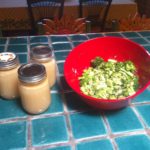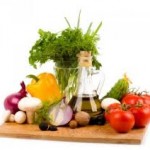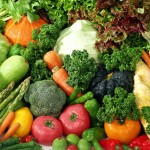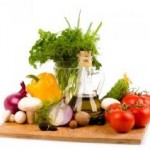What an adventure! One month, 25 states, (plus the District of Columbia and Ontario) 7000 miles, friends, family and beautiful country.
In our travels across the country to the eastern seaboard my husband and I did not encounter too many good food choices. We were often in rural areas with no Whole Foods etc. We decided to eat veggie omelets the mornings that we ate in cafes, and most were quite delicious and fresh! We bought fresh produce along the way and ate many simple meals in the car, such as fresh Wisconsin cheese and apples.
We purchased a large BP free water container from REI in Santa Fe and filled it with our good filtered well water. That lasted for about half the trip. We refilled it at Whole Foods in Bloomington, MN. We did not purchase 1 plastic water bottle in an entire month! I am a firm believer in staying well hydrated and we had NO excuse not to.
In addition we packed our green food powder, whey protein powder, B Complex and other supplements and did a pretty good job of maintaining our routine we have at home.
Keep in mind that we were not in an RV but traveling in Tom’s Four Runner. We stayed with many loving friends and family along the way. We even helped with the construction of my daughter’s family’s farm house in Wisconsin! We did manage to go on hikes and walks along the way.
Our adventure began in Baltimore where Tom’s son lives, continued on through Rhode Island, Vermont, New York, Ontario, Michigan, Wisconsin and Minnesota to name a few places! We completed our last few days driving through the fabulous Rocky Mountains at the height of the Aspen color and then stayed our last night on the road at my favorite hot springs on the planet, Ojo Caliente! ojospa.com
Seeing our grandson, Henry, was clearly a BIG highlight of the trip. This is Grandpa Tom hangin’ with him while he ate frozen raspberries from their garden. He loves them! That kid will eat any veggie you put in front of him…a great role model at 14 months!
We are so grateful to everyone’s hospitality along the way!
Needless to say it was great to get home. This is the sunrise that greeted us on October 1st. Wow!
In Good Health! Nina

















